You never find yourself staring at a Thai menu, wondering whether to choose pad see ew vs pad woon sen? Both options are incredibly delicious, but bring something unique to the table. Let’s find out what makes each of these Thai dishes special so that you can choose your favorite new!
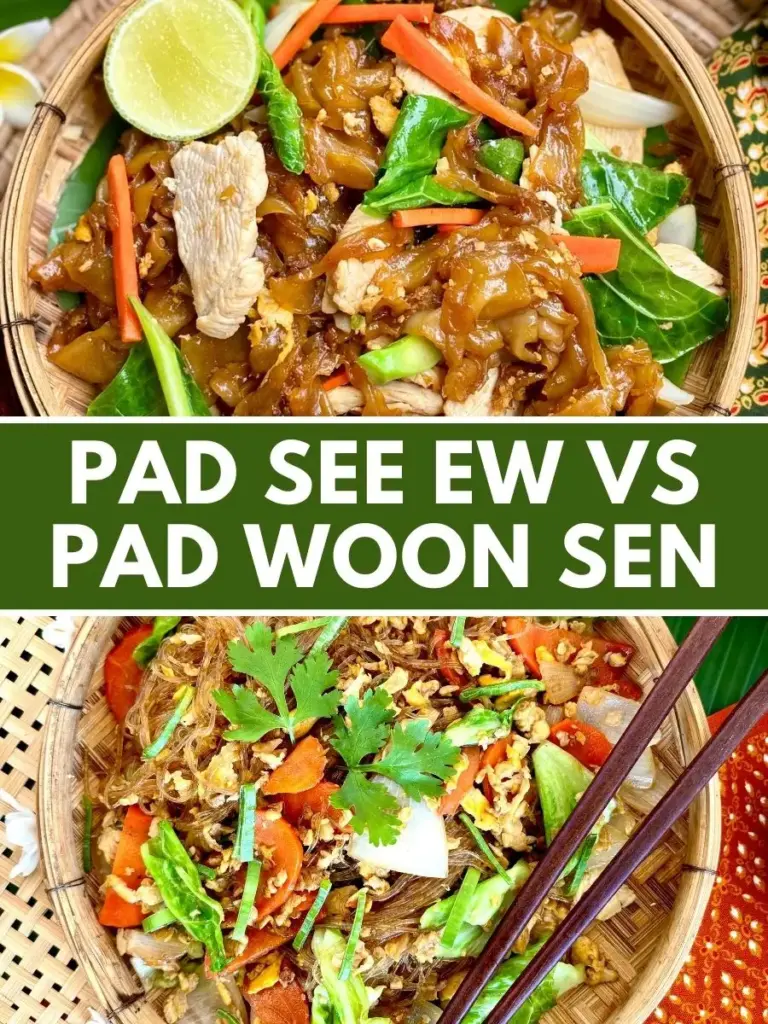
After reading this post, you will know which Thai dish is right for you!
If the pad you see EW it sounds like your type of meal, take a look at my recipes for the beef Pad see EW, chicken pad see EW or pad see the Gamberi EW.
If Pad Woon Sen is more your style, don’t miss my recipe for Pad Woon Sen!
Pad Woon Sen Vs Pad see EW ingredients
Let’s find out some of the key differences between Pad Woon Sen and Pad See EW. Both dishes are prepared with distinct noodles, flavors and vegetables.
Keep in mind that the taste of any Thai dish can vary depending on who prepares it. Several regions in Thailand also have unique preferences, but the main ingredients remain consistent.
Noodles
Used noodles in the pad see EW: This dish has wide rice spaghetti, known as Sen Yai in Thai. These noodles are rubbery and perfect to absorb the rich and salty flavors of the pad see the EW sauce.
You can find large rice spaghetti in Asian food stores or supermarkets. If you have a little more time, you can do them yourself using my sen yai noodles recipe.
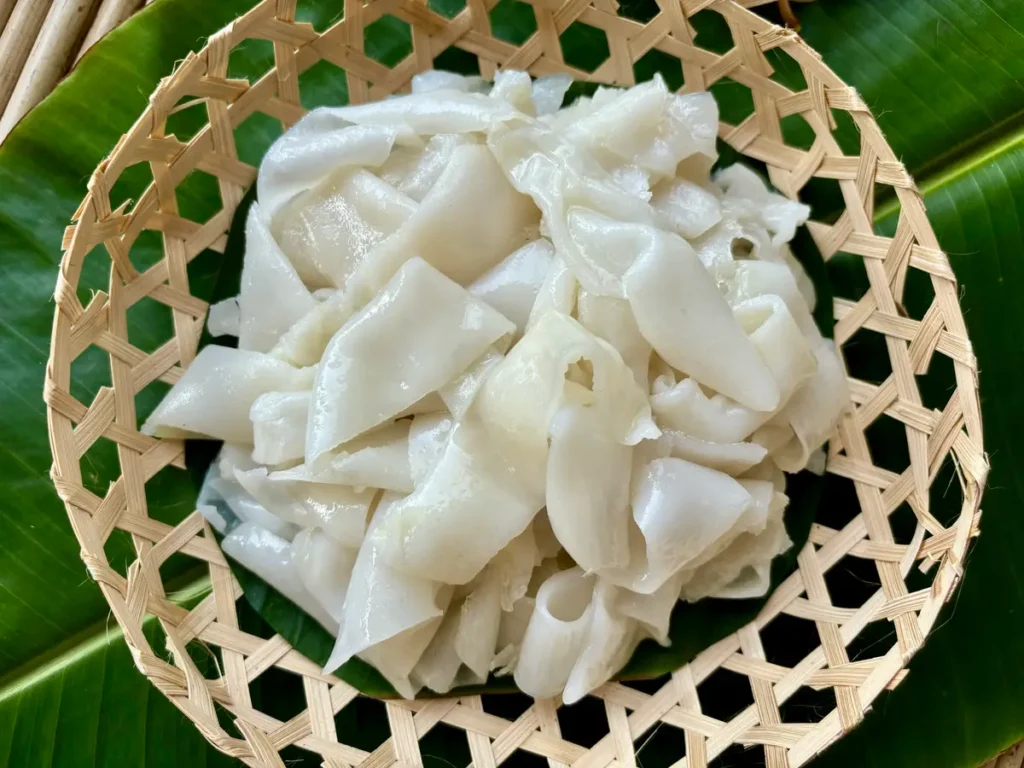
Used noodles in Pad Woon Sen: Pad Woon Sen USA Glass noodles, also called noodles of mung beans. These noodles are perfect for the fried and soups, since the glass noodles are tender but rubbery and absorb the sauces magnificently.
Glass noodles are also used in Yum Woon Sen, a tasty Thai salad and in the Thai chicken glass noodle soup.
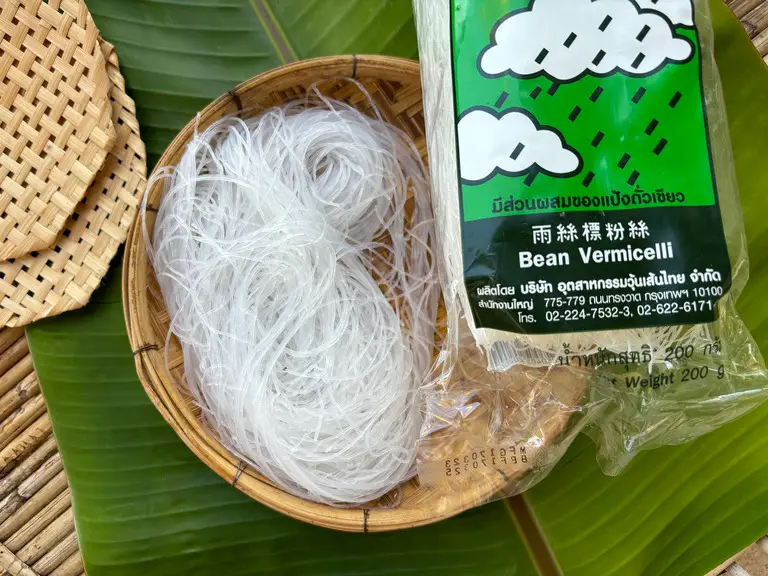
Flavors and sauces
Flavor of the pad see EW: Pad see EW is known for its rich, savory and slightly sweet flavors. The noodles are fried with a combination of dark soy sauce, light soy sauce and oyster sauce, with consequent caramelized dish and rich in humans.
Flavor of pad woon sen: Pad Woon Sen offers a lighter flavor perfect for children. The sauce generally includes a mix of Thai sauces, such as soy sauce and oyster sauce.
The dish is often crazy with garlic, carrots, cabbage and onions, making it fresh, slightly sweet and salty, depending on the condiments used.
Vegetables
Vegetables used in the pad see EW: Chinese broccoli (Gai Lan) is a key ingredient in the pad see EW, providing a slight bitterness that balances the sweetness of the dark soy sauce.
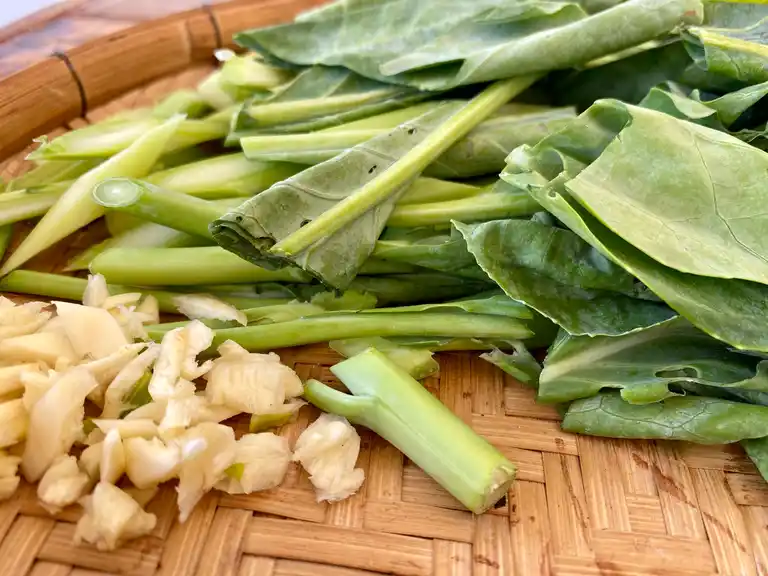
Vegetables used in pad woon sen: Pad Woon Sen is usually prepared with a mix of vegetables, including carrots and celery. This mix adds vibrant colors, flavors and plots, which may vary from a recipe to a recipe.

Gaskets
Pad seals see EW: Generally, the pad see EW is not supplied with many contours. However, you can always squeeze a little fresh lime juice on it or add a little fresh chillies or Thai chilli flakes if you like a little heat.
Gaskets for Pad Woon Sen: Fresh cilantro and lime wedges are perfect for the garnish of the pad woon sen. I prefer spicy Thai food, so I usually look at my fried glass noodles with pepper flakes.
Protein
Both pads see EW and Pad Woon Sen can be customized with various proteins such as chicken, pork, prawns, beef or tofu. Chicken and pork are popular choices and tofu is an excellent vegetarian option that absorbs flavors magnificently.
Pad see ew vs pad woon sen seal calorie
Pad see ew: Generally contains between 500-700 calories per portion, depending on the size of the portion and the ingredients used.
Path Living Sen: Generally varies from 300-500 calories per portion. The glass noodles and the lighter sauce contribute to its lowest calories.
Summary
Pad see ew
- Preparation: Quickly fried over high heat with Chinese broccoli and a salted jump sauce.
- Noodles: Fresh wide rice noodles.
- Taste: Sweet and salty with caramelized edges.
- Sauces: Pad See EW is generally prepared with dark soy sauce, light soy sauce, oyster sauce and sugar. The recipe may vary, with some versions also including fish sauce.
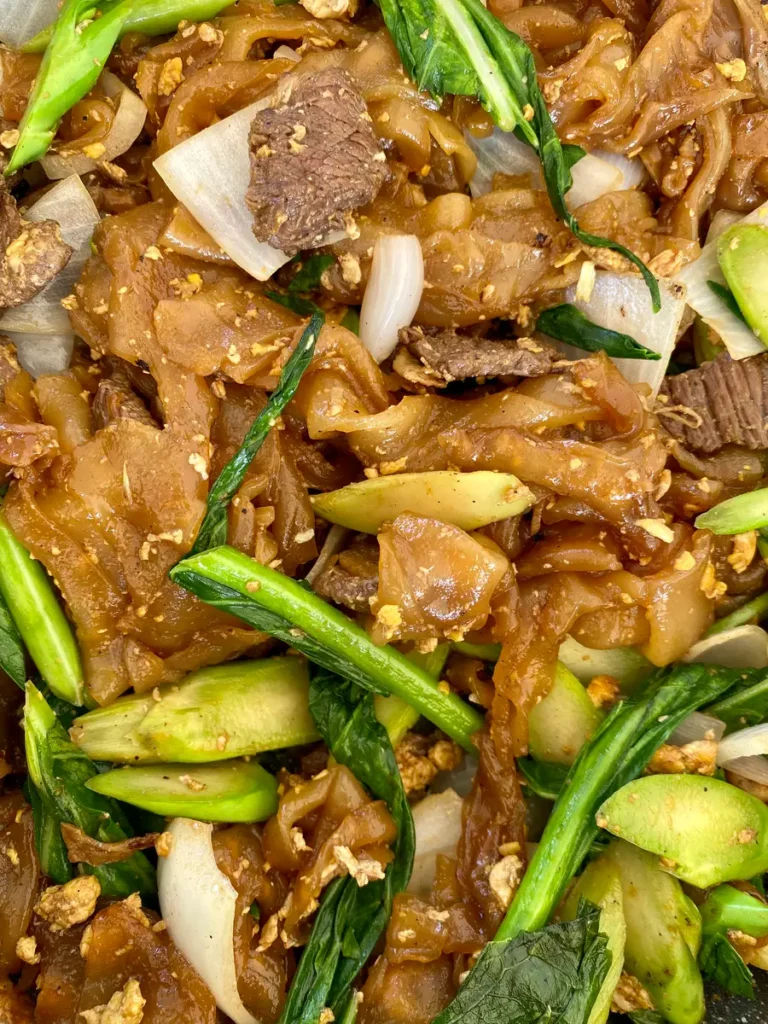
Path Living Sen
- Preparation: The noodles are fried with a mixture of vegetables and a light and salty sauce.
- Noodles: Sliding and translucent glass noodles.
- Taste: Light and delicate with a variety of plots.
- Sauces: A mix of Thai sauces such as soy sauce and oyster sauce.
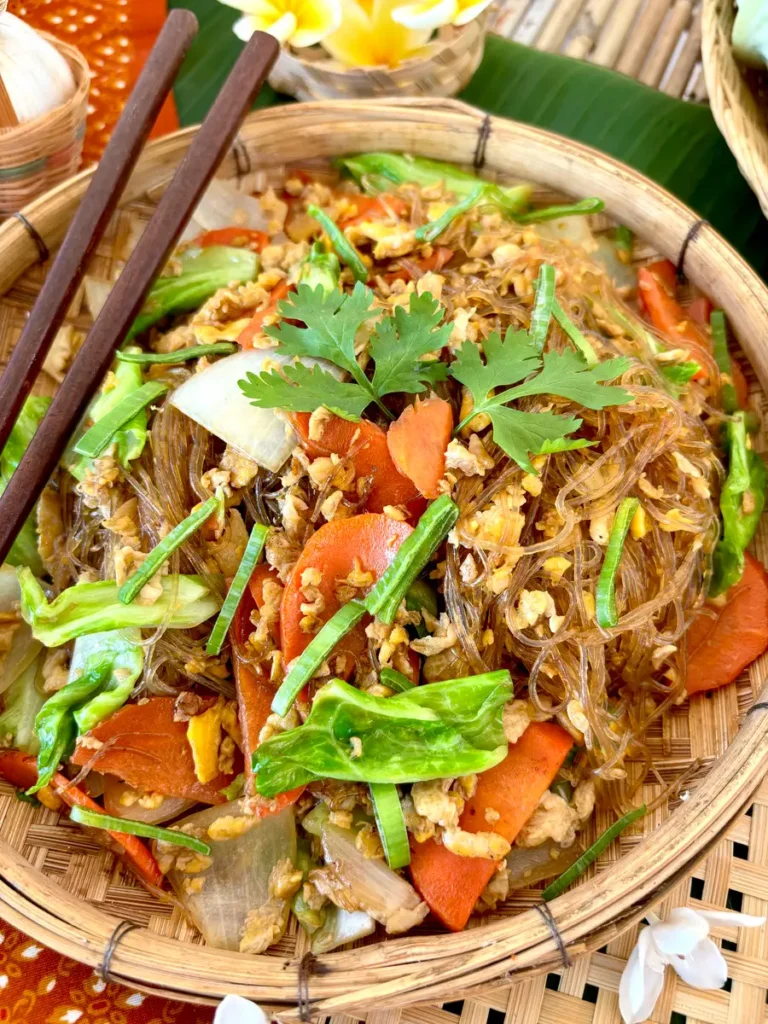
Other comparisons of Thai noodle
If you are curious to know other Thai dishes, take a look at some of my other posts!
Conclusion
So, brami the sweet and savory flavors of the pad see EW or the light and tasty charm of Pad Woon Sen? For me, both dishes have their special moments. Share your favorite in the comments below and follow me on social media for further inspirations of Thai recipes! Facebook, InstagramAND Pinterest.

